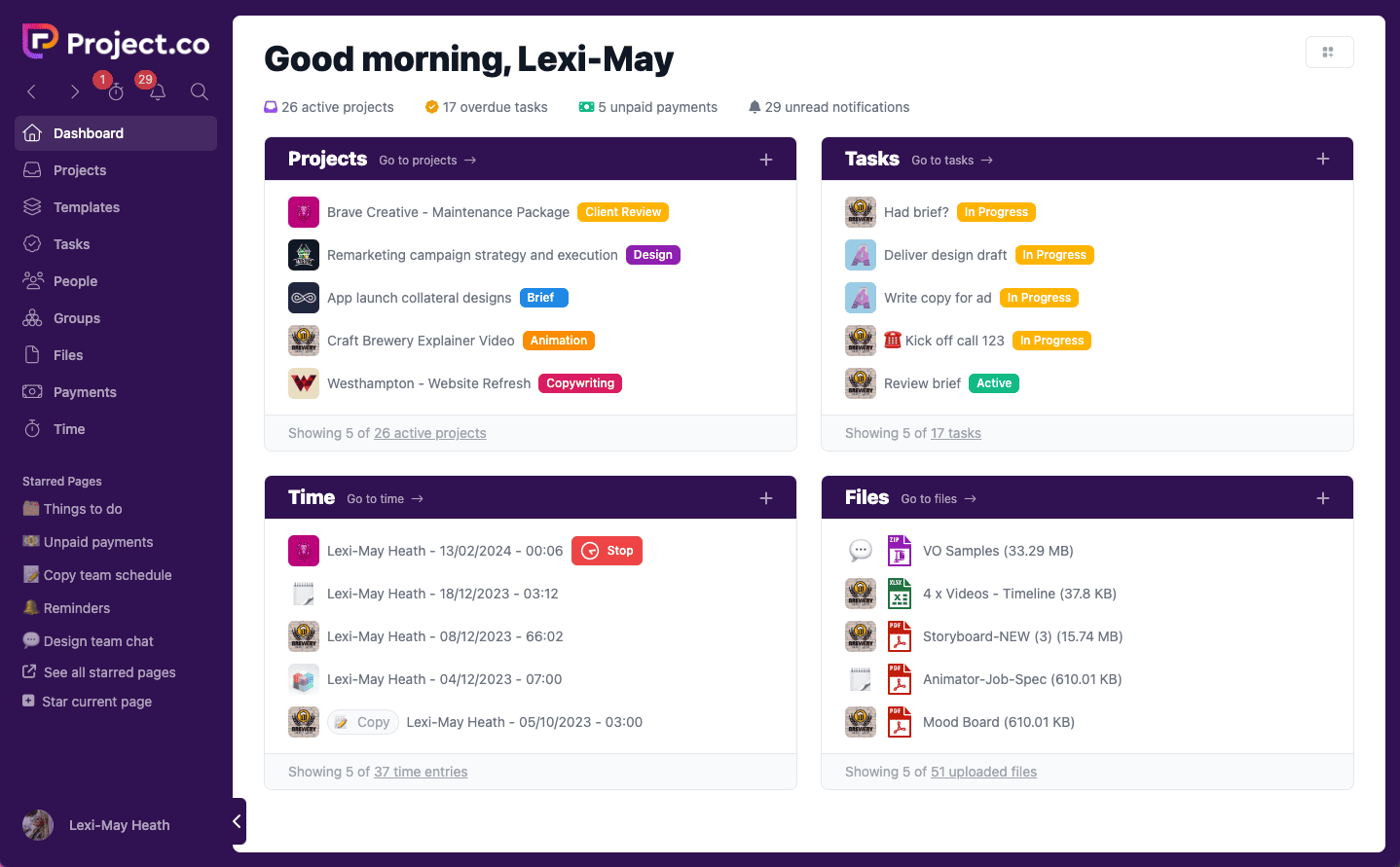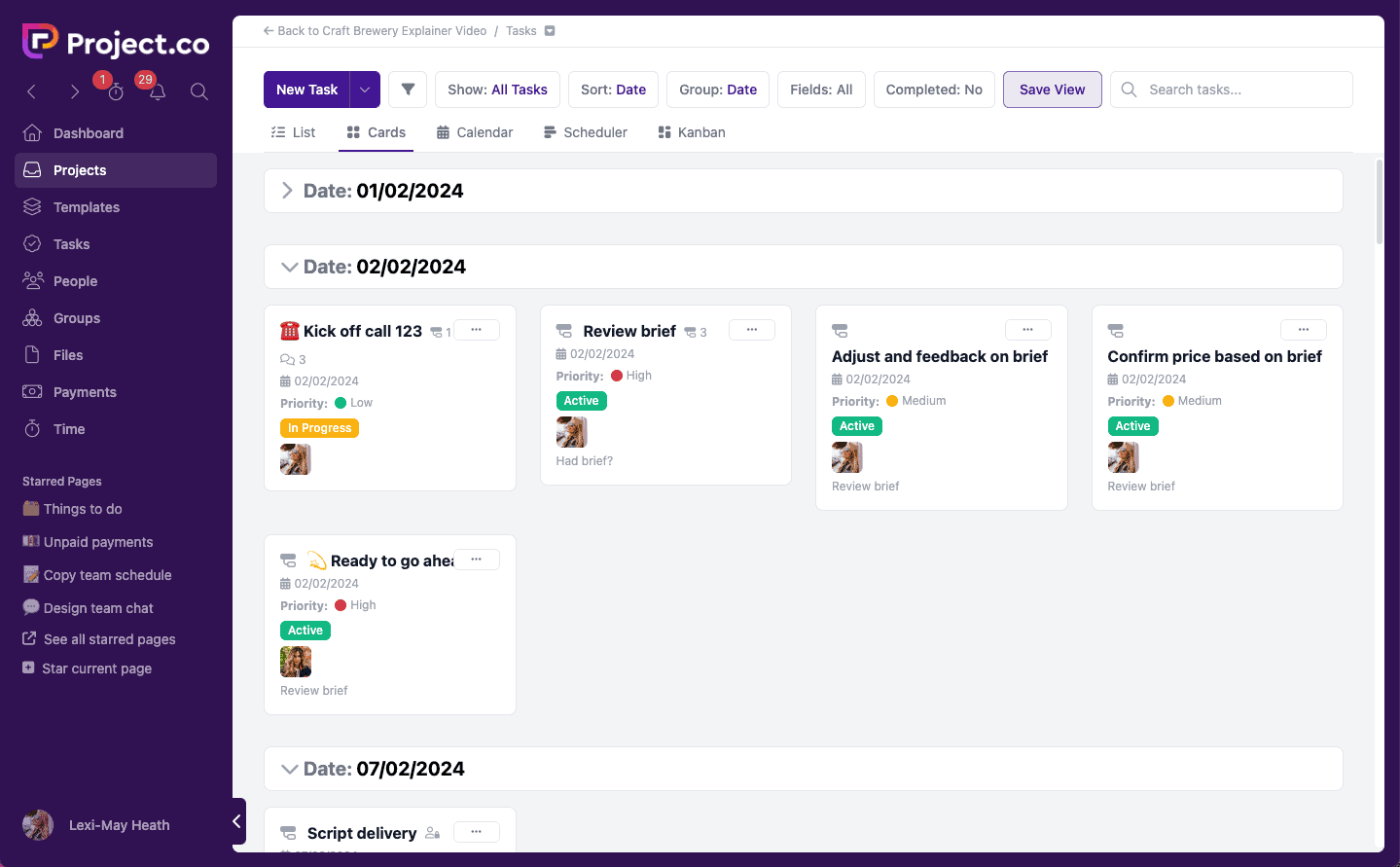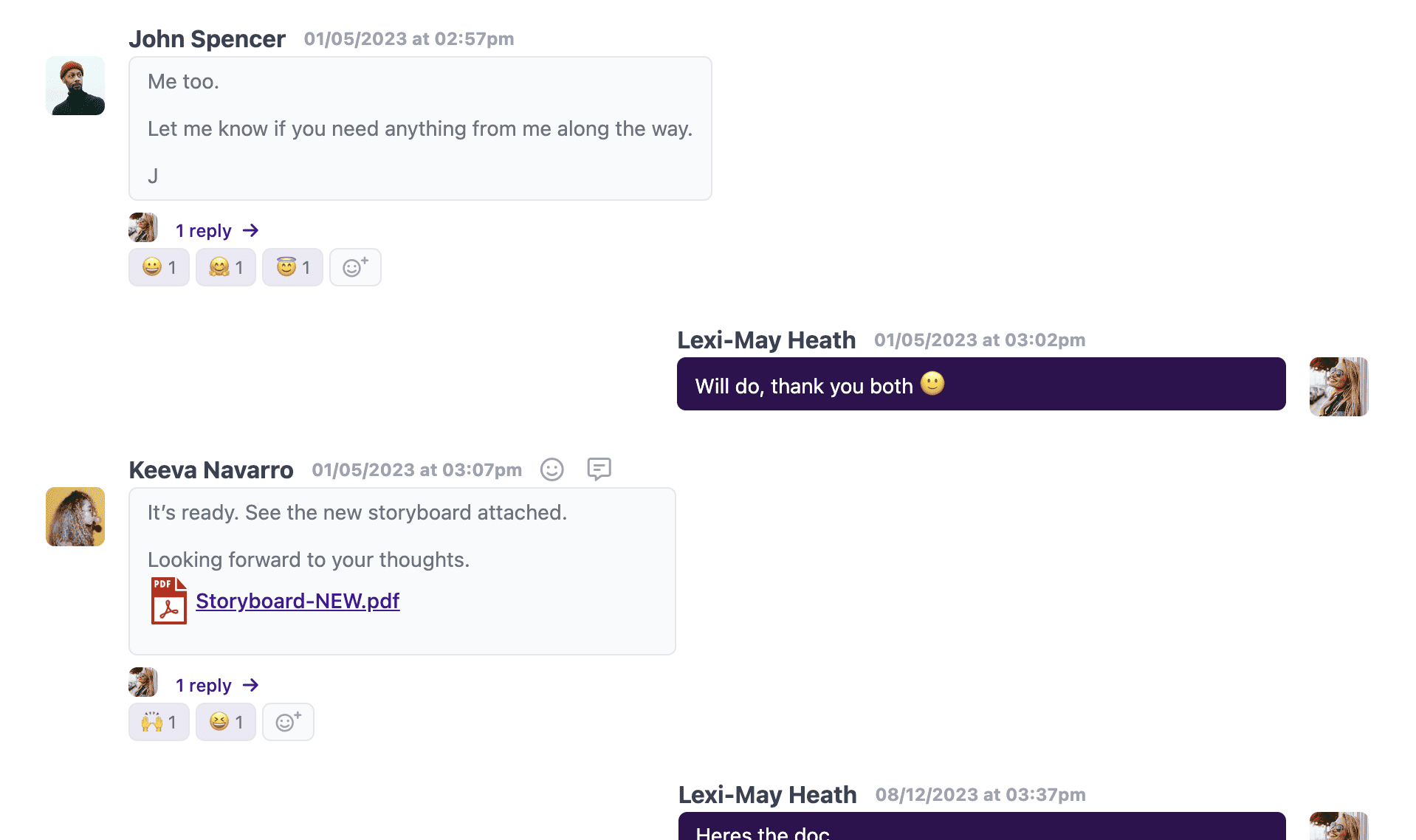In this article we’re going to take an in-depth look at project portfolio management.
Project portfolio management requires you to juggle different resources, prioritise certain tasks, and make quick decisions on what’s best for your overall business goals.
In this ultimate guide to project portfolio management, we’ll take a look at why it’s important, what the benefits are, and how Project.co can help you manage your project portfolio successfully.
What is project portfolio management?
Project portfolio management (or PPM for short) is the centralised management of ALL an organisation’s projects.
A lot of projects in a portfolio can differ largely. However, it’s likely that the success of each project will rely on shared resources within the business.
PPM ensures that the right projects are worked on at the right time to maximise success for the company.
The diners, in this case, would be your project stakeholders or customers.
Why project portfolio management is important (PPM benefits)
Project portfolio management is important for many reasons. For starters, when you’re juggling multiple projects, PPM can help you to stay on track and remain organised.
When you have a project portfolio management strategy in place, you’ll be able to quickly and easily understand which projects should be worked on at which time in order to maximise profit and resource management within your company.
PPM also allows for a more balanced distribution of risk, and it helps to remove bias and make decision-making easier. In other words, no favourites!
Lastly (but by no means least), project portfolio management gives improved visibility and transparency to your project stakeholders. This is because when you have a better handle on your projects – by centralising information and keeping consistent reports – you can relay this effectively to your stakeholders and clients.
– Stay organised
– Maximise profit
– Improve resource management
– Remove bias
– Easier decision-making
– Improved transparency
Project portfolio management vs. project management
Project portfolio management and project management – what’s the difference? It’s very easy to get these two terms mixed up, but there are some distinct differences…
1. Scope
The first difference is project scope. Project management is more focused on managing individual projects from start to finish. Project portfolio management, however, is about looking at the bigger picture and managing your projects as a whole.
2. Focus
The next difference is where your focus lies. Project management requires you to look at projects close up. You need to focus on individual details like deliverables, deadlines, and project budget. PPM asks you to take a much wider view. Instead of focusing on aspects of individual projects, you need to focus on aligning projects with your organisation’s overarching goals and business strategy.
3. Decision-making
The last difference we wanted to highlight is decision-making. In project management, decisions are made on a project by project basis. You take a look at the project in front of you and you make decisions based on what’s best for that project at that time. With PPM, however, decisions are made at a higher level, and are more about the projects themselves. For example, deciding on which projects to prioritise and how to balance your project portfolio in order to best achieve the objectives of the company.
Project portfolio management process (5 steps)

1. Identify your business goals
Your business likely has many goals; most businesses do. There are the typical goals: increase sales, reduce costs, and so on. And then, of course, there will be goals that are more specific to your individual organisation.
To get started with PPM, you need to identify those business goals and you need to understand them in order of priority. Only by clearly defining and prioritising business goals will you be able to manage your project portfolio effectively for long-term success.
2. Develop a project evaluation criteria
This is a fancy way of saying ‘pick the best projects!’
And, yes, ‘best’ is subjective so that’s where your criteria comes in. When you have lots of projects coming at you, it can be difficult to know which to take on and which to prioritise. By developing a project evaluation criteria you can score or rank projects based on what’s important to your company.
Think about factors like:
– Expected profit
– Resources required
– Risk involved
– Difficulty to complete
– Time to complete
– Alignment with business goals
By having a list like this in your back pocket you’ll be able to make fast and informed decisions on how to best juggle your project portfolio.
3. Allocate resources
Step three in your project portfolio management process is to allocate resources. After you decide which projects you’ll be working on, based on your project evaluation criteria and business goals, you can then strategically allocate resources depending on each project’s priority.
Technology can also be hugely beneficial for managing and allocating resources. Project management software will allow you to visualise and minimise bottlenecks, and effectively allocate project work in order to maximise productivity, profit, and the wellbeing of your teams.
4. Monitor your projects
Monitoring your projects is absolutely critical for a successful PPM strategy. You should continuously monitor project progress, timelines, and delays, in addition to managing any potential risks and tracking your KPIs.
We know, it’s a lot! But project management software can help here, too. The right tool will allow you to centralise all of your information so you can quickly and effectively monitor your projects.
Taking a proactive approach to project management will help to ensure that you spot potential issues early and can take the necessary steps to keep your projects on track.
5. Adjust if needed
At the end of the day, PPM is there to help you stay on track, organised, and profitable. So if something about the way that you’re managing projects isn’t helping you to do your best work, then it’s important to be flexible and adjust if needed.
This should also apply at the project level. For example, if a project isn’t going as you’d forecasted then being able and ready to make tough decisions – whether that’s adjusting timelines or terminating a project completely – will help you to stay on track and keep your main focus in mind, which should be achieving your business goals.
How Project.co can help with PPM
Project.co can make PPM a breeze for project managers, and we want to show you exactly how by shining the spotlight on five key features.
1. Centralised dashboard

Everything you could possibly need to access throughout your day as a project manager comes together for you in one centralised dashboard.
This makes it easy to monitor the progress of your projects, reallocate resources, adjust delivery dates, and everything else you need to manage your portfolio effectively.
2. Personalised views

Not only can you access all of your projects in one place, but you can also choose the view that best suits the way you work.
This could be a simple list format, cards, a scheduler or calendar view, and even kanban.

You can also group projects by status, organise by name or deadline, choose which fields to display. The customisation options are practically limitless!
3. Drag-and-drop adjustments

As a project manager, you need to make quick and informed decisions that help you prioritise the right projects and allocate resources where they’re most needed.
Our drag-and-drop functionality makes this so simple. From any of your project views, you can simply drag tasks onto different dates and people, adjusting your schedule instantly and updating everyone in real time.
4. Monitor progress

Seeking out and eliminating bottlenecks is paramount for PPM. With Project.co, you can easily monitor the progress of projects using the kanban view. And just drag and drop to make adjustments if you do spot any potential hold ups.
You can also create customisable project statuses that allow you to know exactly where your projects are up to at a glance.

5. Visibility for all

You can invite your project stakeholders to join Project.co and give them visibility over the project – so they know where things are up to, what the next steps are, and what they need to provide.
This can help projects run much more smoothly. And don’t worry, you can set permissions so you decide what they see and what they don’t!
Final thoughts
Project portfolio management – when done correctly – has a whole host of incredible benefits for your company, and can make your life as a project manager a lot easier!
And the number one tool you need for that is a project management system. The ability to see all of your projects together in one place and easily reallocate resources with simple drag-and-drop functionality is invaluable for PPM.
And the data backs it up. According to our Business Communication Statistics 2024, 74% of project managers say using a project management tool leads to better internal efficiency and 64% say it delivers an increased rate of project success.
Try Project.co out for yourself today, it’s completely free to get started.


